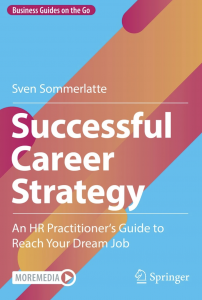The choices to take a new job, to change company or to give a new orientation to our career are highly strategic personal and professional decisions. It is very important to have a robust decision process to avoid regrets and second thoughts. This article outlines a simple tool that will make better career decisions.
Every now and then, we have to make an important career decision. This could be a choice between two internal career options or because we have been contacted by a headhunter who offers an external opportunity. In some cases the decision is very clear an easy, because we have been looking for exactly that job. In other cases we might end up agonizing because we are not sure what option to choose. In this article I will outline a simple and practical tool that should help you in this decision process.

Let’s first take a closer look at these difficult career decisions. It is interesting to understand that there can be quite different reasons why they are difficult to make. The challenge might come from the fact that they are very close and that we have trouble figuring out which one is the better one, because the pros and cons of both options are quite in balance. Maybe there are just certain smaller aspects that make the difference.

On the exact opposite side, we may have to choose between two very different options. This is for example the case if we have the possibility to give a completely new orientation to our career. As an example, we might have responsibility for a certain function in a large organization and we are being offered a prestigious role in a consulting firm that operates in this field. This implies moving from an operational responsibility to an expert role. Or we might be operating in the public sector and a private company offers a senior role in their management team.

These choices can give a very different orientation to our professional activity. They might represent fantastic development opportunities, but the simple fact to make more fundamental changes makes such a decision potentially very difficult.

We may ask ourselves questions: Am I going to be able to adapt to the new environment? Is this type of role what I really like, or will it maybe become less interesting after a while? Am I going to be able to live up to that new challenge?

Very often, one of the two options is the status quo: I could either continue to do my current job or change. Obviously, the status quo option is often considered as the safer bet, simply because this is what we already know. The uncertainty of the new is usually perceived as a certain risk. The human nature being in general rather risk averse, we could have a certain inclination to favor the “stay where you are” option and might miss out on opportunities simply because of our need for security. That is obviously far from optimal, because we might lose out on the chance to accelerate our career, foster our personal development and discover new environments.
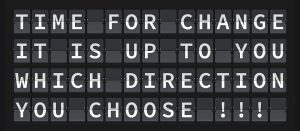
It is therefore very advisable to ensure that our decision process is as robust as possible. But what to do? The classic approach is to establish a list of pros and cons. This is indeed a very advisable. We should also ensure that we can collect advice from competent individuals. This is even more helpful if they know us, because they can then factor in the way they believe the job options would correspond (or not) to our profile, needs and expectations. Finally, conducting a thorough due diligence about the company, its products or services and its culture will complete the information we may have been able to gather thought he interview process.
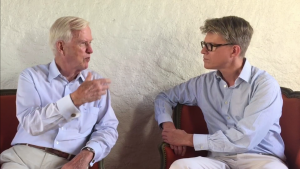
But once all of these important activities have been completed, we might be confronted precisely to the dilemma mentioned above, where we struggle to come to a clear decision. This is where the tool I would like to outline here can hopefully be helpful. I have been able to recommend it to a number of individuals who have confirmed to me that they have found it useful and I therefore thought should share it here.

The approach is very simple. All you need is 3 days, ideally in a time where you can do some introspection and where you are not totally absorbed by other important matters.
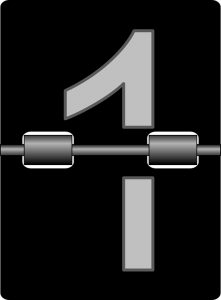
On day One you set yourself a time where you will make a final decision between both options. Let’s say at 6pm. You use the day to reflect thoroughly. You may review the list of pros and cons again and again, make some last calls to colleagues and friends to collect their advice and latest at the set time, you write your final decision on a piece of paper and you consider it as your final decision for the time being. You will then observe an interesting phenomenon: once you have chosen on option, your perspective will change on the options.

Maybe you will feel relief which will comfort your confidence. Maybe this will trigger in the contrary even greater doubt. Most likely the fact of having made a decision will allow you to step back a bit. Similar to a painter who has accomplished an important step in his or her work and who steps back to observe the accomplishment. This is very helpful in such a decision process. The leisure time in the evening, maybe certain sportive activities or hobbies will help detach even more and observe the decision from some distance. And of course the night be beneficial as well. Sleeping it over is very often helpful as we know.

Now the important part in this decision support approach that I recommend is that you will start the exact same process 2 more times: on the next day, you should again set a time where a “final” decision will be made. As you understand now, these final decisions are milestones which can be revised on the following day. But they are still firm decision on that specific day. It is indeed very important to come to a clear decision between the options and to consider it final on that day. It is advisable to write the decision down.
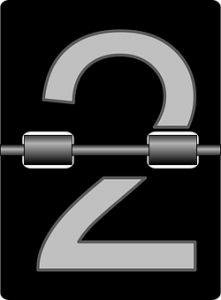
On the second day you have the possibility to make a new temporarily final decision. This might confirm the decision from the previous day or it might actually go in the opposite direction. Both cases offer you interesting insight. If the decision is the same, that indicates that the reflection time has rather confirmed the rational decision you made of the first day. If the choice on the next day is in favor of the other option you can start to reflect about the reasons that have made you change your mind.

At the give time you write that decision down. You try to step back in the evening and overnight to let the more intuitive processes operate, which may throw different light on your decision or in the contrary, give you that feeling of having made the right choice. You have still one more run and the option to change your mind. But on the third day, the decision will be the final and definitive one. You will have the opportunity to recap all the thought you had over these past three days and get back into some of the due diligence you have done. At the set time, you come for the third time to a decision, but this time it should be the definitive one.
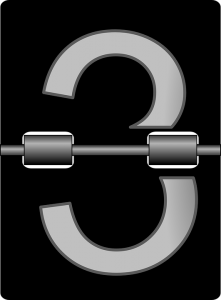
You will see that you will approach that third decision milestone with greater serenity, because you have experienced that exact same decision process two times already. Serenity helps because it eliminates the noise that distracts our thinking. You will probably feel able to make a more robust choice thanks to that.
 In addition, you will be able to consider the two previous decisions.
In addition, you will be able to consider the two previous decisions.
- The easiest is of course if you confirm the first choice a third time. That would mean that you are quite clear.
- If you have chosen option A two times and then you finally move to option B, that usually means that a certain regrets or second thoughts have emerged that you had not given the same importance before the decision was made, but that suddenly turns the situation around. It is good to make that experience before the final decision is due, because sometimes these turning points occur when it is too late.
- The third possibility is that you had made an initial choice (for example for option A), you have then had doubt which led on the second day to a different decision, but then finally you confirm your fist choice, which usually allows you to feel quite reassured that the initial decision was the right one.

I believe that this process will help you to make the best possible decision. The advantage of this tool is that you put yourself into a real decision situation but with the possibility to revise the choice. You can place yourself in to both perspectives: the perspective before and after the decision, while keeping the freedom to revise the choice.

Does this mean that it will always be the right one and that it excludes any wrong decisions? Of course not. But I believe that it will make you decisions more robust. You may also ask if the third decision can’t be changed again and if this process could not be extended to 4 or 5 days, or even more. You have of course the freedom to adjust this decision tool to your specific needs and requirements. But my recommendation would be to keep it to a well-defined duration (3 days are the optimal time frame in my eyes) so that you keep the “tension” that is required to make it “real”. It the process goes on for too long, the “final” decision of the day become less committing and that would alter the efficiency of that decision tool.

I hope that this will be useful for you and I would value greatly to get your feedback.
More information in my book:
Sven Sommerlatte : Successful Career Strategy – An HR Practitioner’s Guide to Reach Your Dream Job (Springer, June 2023). ISBN: 978-3-662-66790-3
